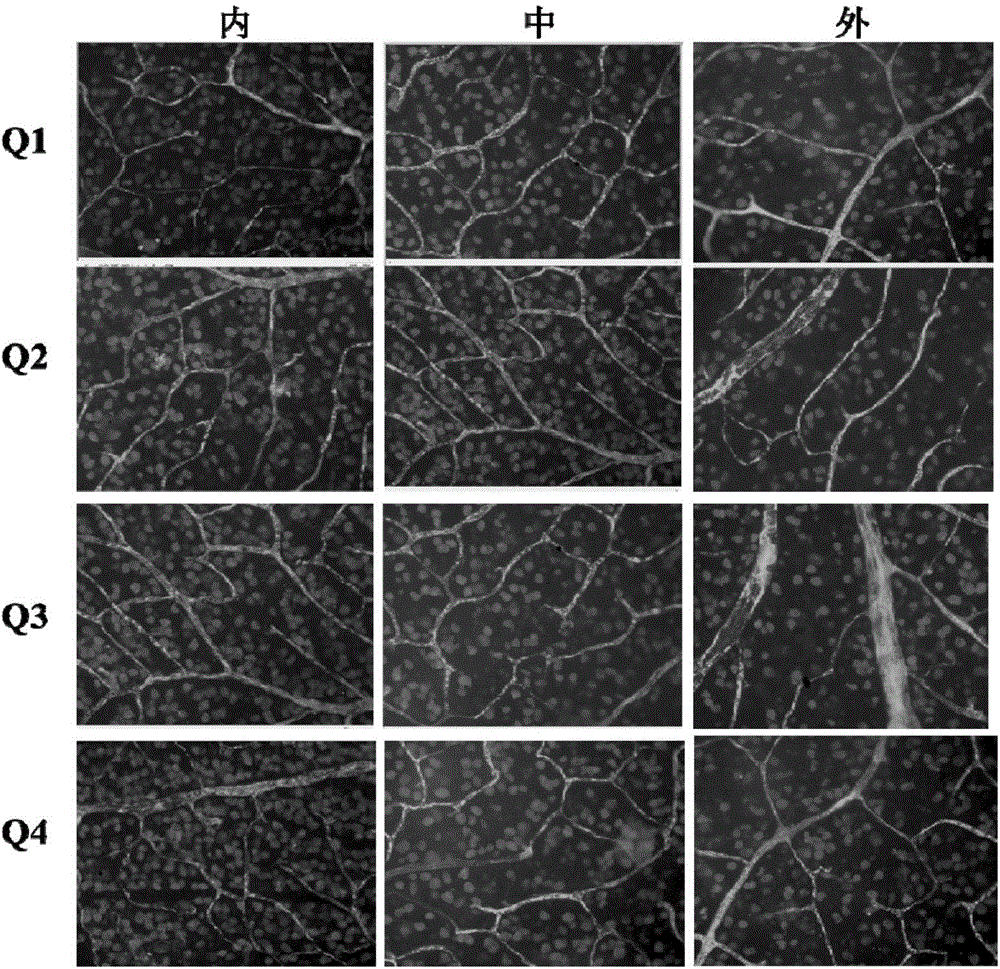Uses of 7,8-dihydroxyflavone in preparation of drugs for treatment of optic nerve injury
A technology for optic nerve injury and quercetin, which can be used in drug combinations, nervous system diseases, pharmaceutical formulations, etc., can solve problems such as unsatisfactory clinical efficacy, and achieve good clinical application prospects, treatment of optic nerve injury, and prevention of decline and death.
- Summary
- Abstract
- Description
- Claims
- Application Information
AI Technical Summary
Problems solved by technology
Method used
Image
Examples
Embodiment 17
[0026] Example 17, Protective effect of 8-dihydroxyflavone on retinal ganglion cells (RGC) after excitatory injury of rat retina induced by N-methyl-D-aspartic acid (NDMA)
[0027] 1. Experimental method
[0028] 1.1 Grouping of experimental animals
[0029] Twelve healthy Sprague-Dawley rats, half male and half male, weighing 200-240g. After examination, the cornea was transparent, the iris blood vessels were clear, the pupils were equal in size and round, and they were sensitive to light reflection. The left eye is the model group, and the right eye is the experimental group:
[0030] Model group: NMDA was injected into the vitreous cavity of the left eye;
[0031] Experimental group: NMDA+7,8-dihydroxyflavone was injected into the vitreous cavity of the right eye.
[0032] 1.2 Drug Injection
[0033] Rats were anesthetized by intraperitoneal injection of 3% pentobarbital sodium at 3ml / Kg body weight, compound tropicamide eye drops were used to dilate both eyes, and 0.3...
Embodiment 2
[0053] Example 2 Optic Nerve Trauma Model Therapeutic Effect
PUM
 Login to View More
Login to View More Abstract
Description
Claims
Application Information
 Login to View More
Login to View More - Generate Ideas
- Intellectual Property
- Life Sciences
- Materials
- Tech Scout
- Unparalleled Data Quality
- Higher Quality Content
- 60% Fewer Hallucinations
Browse by: Latest US Patents, China's latest patents, Technical Efficacy Thesaurus, Application Domain, Technology Topic, Popular Technical Reports.
© 2025 PatSnap. All rights reserved.Legal|Privacy policy|Modern Slavery Act Transparency Statement|Sitemap|About US| Contact US: help@patsnap.com



